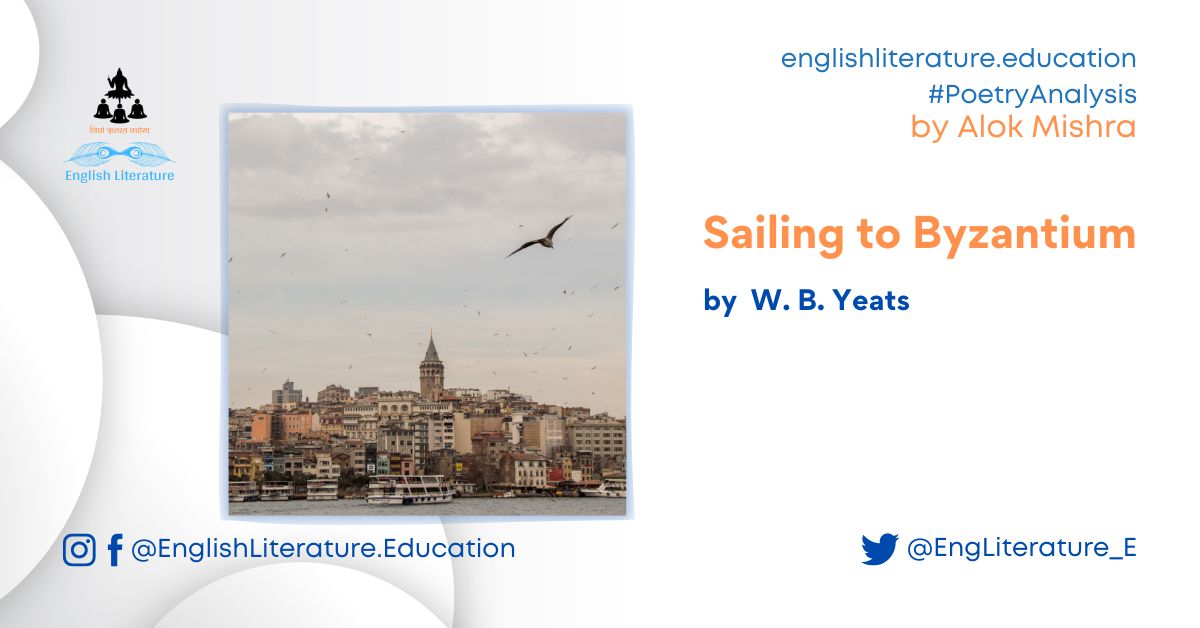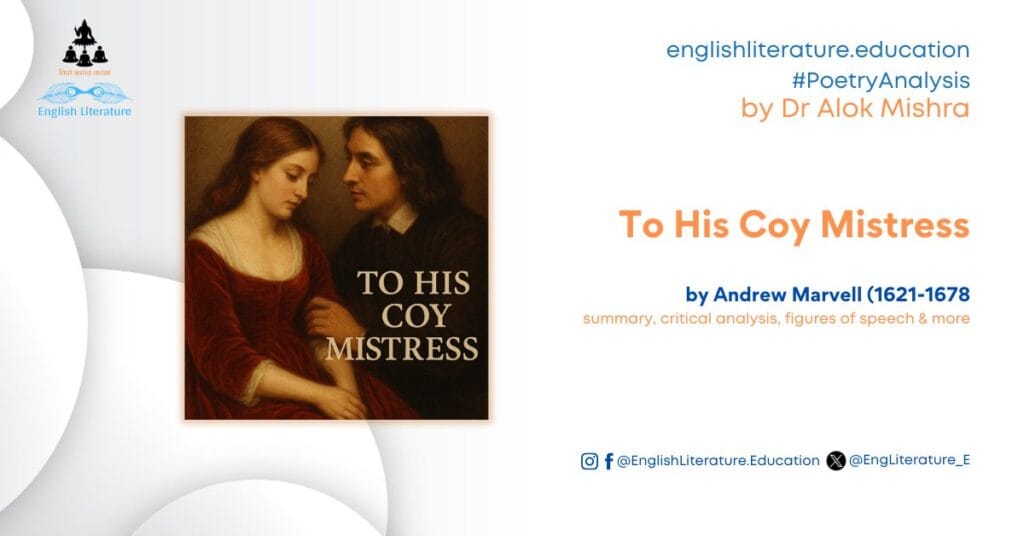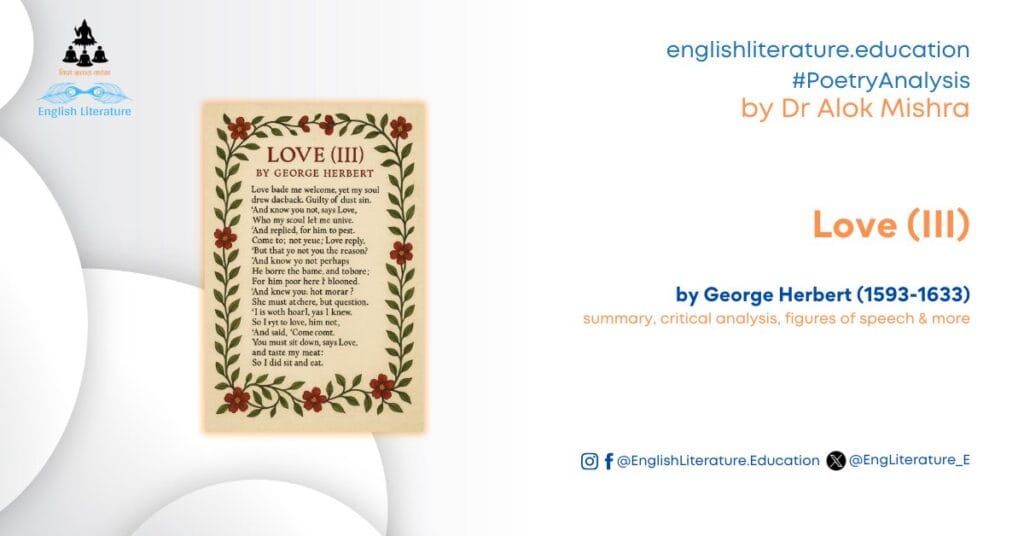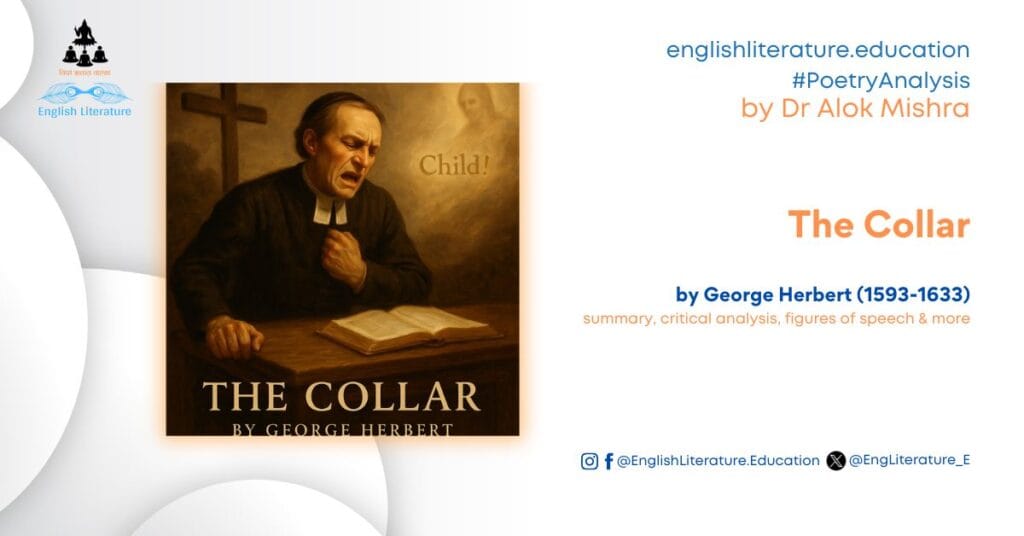III
O sages … artifice of eternity.
The speaker in the poem begins with an expression of a heartfelt plea to enlightened sages, seeking their guidance and wisdom to elevate his spiritual understanding and find his inner song. Let’s begin with line 17:
“O sages standing in God’s holy fire”
Now, with the opening of the third part, the poem reaches a moment of intense spiritual longing as the speaker addresses “sages” who stand in “God’s holy fire”. The sages are individuals depicted as wise and enlightened beings, possibly spiritual masters or guides who have attained a higher level of understanding and connection with the divine. You can understand the term by referring to the terms such as Guru, Mahatma, Sant, Sadhu, Rishi and Muni as they are the enlightened ones in Hinduism. The image of “God’s holy fire” suggests a state of divine illumination and purification. The sages are depicted as standing within this holy fire, symbolising their close communion with the divine and their embodiment of profound spiritual insight. The fire of spiritual illumination doesn’t burn; it purifies and unburdens one’s soul!
“As in the gold mosaic of a wall,”
The speaker then compares the sages to “the gold mosaic of a wall,” indicating that they are integral components of a divine and sacred structure. This comparison emphasises the sages’ spiritual significance and their status as vital elements within the grand tapestry of divine wisdom and understanding.
“Come from the holy fire, perne in a gyre,”
Now, the phrase “Come from the holy fire” suggests that the sages have emerged from a spiritual realm, carrying divine wisdom with them. The word “perne” is a verb used archaically and means to spin or revolve. The phrase “perne in a gyre” implies the sages’ perpetual and cyclical movement, perhaps symbolising their eternal existence or their harmonious connection with the divine order.
“And be the singing-masters of my soul”.
And then, the speaker implores the sages to become the “singing-masters” of his soul. He wants to accept them as his Gurus and seeks their guidance and mentorship to help him discover and unlock the depths of his own spiritual and artistic potential. The term “singing-masters” may carry multiple meanings. It signifies that the sages can teach the speaker the art of spiritual and creative expression, helping him find his unique inner song. Moreover, it suggests that the sages’ wisdom and guidance can lead the speaker to a higher level of spiritual enlightenment, where he can achieve harmony and unity with the divine.
These lines reflect the poem’s overarching theme of seeking transcendence and spiritual enlightenment. The speaker acknowledges the limitations of the physical world and desires to align his soul with the timeless wisdom of the sages standing in God’s holy fire. By doing so, he hopes to become spiritually attuned and unlock the union with the divine through his inner being, the soul, and find his own inner song—an immortal expression of his artistic and spiritual self. The lines evoke a sense of reverence and yearning for a profound connection with the divine and the transformative power of spiritual wisdom.
Lines 20-24:
Consume my heart … artifice of eternity.
In these four lines from Sailing to Byzantium, part 3, the speaker conveys a deep sense of longing and dissatisfaction with his mortal existence. He yearns to break free from the limitations of the physical world and seeks to find solace and meaning in the realm of spiritual and artistic immortality. Let’s begin with line 20:
“Consume my heart away; sick with desire”
The phrase “Consume my heart away” may express the speaker’s intense longing and yearning for something beyond the transient and mortal world. He feels a burning desire within himself, which he wishes to be fulfilled or consumed by a higher purpose or greater truth. And it is worth noting that this desire is so overwhelming that it leaves him feeling “sick” with longing for spiritual fulfilment. The poet keeps on:
“And fastened to a dying animal
It knows not what it is;”
Now the speaker describes himself as being “fastened to a dying animal,” and he may be referring to his physical body (which is dying by ageing). He sees and realises that his mortal form is merely a temporary vessel, which he is bound to and identified with. However, he also perceives a disconnect between his physical body and his (or The – refer to Gita) higher consciousness. The phrase “It knows not what it is” implies that the physical body lacks the understanding or awareness of its deeper spiritual essence. The poet continues:
“and gather me
Into the artifice of eternity.”
The speaker yearns to be “gathered” or absorbed into the “artifice of eternity”. Here, “artifice” refers to the realm of artistic and spiritual creation that transcends the limitations of the mortal world. The term “eternity” signifies a timeless existence, beyond the confines of the physical and temporal. Again, if you compare it to the Hindu spiritual system, there is Aatman and there is Parmatman – the soul and the supreme soul. Every soul, by nature, yearns to merge with the supreme soul.
These lines represent a crucial moment of existential contemplation in the poem. The speaker grapples with the contrast between his transient physical being and his desire for something enduring and meaningful. The use of “consume,” “sick,” and “fastened” emphasises the burden of mortality and the speaker’s urgent need for liberation from the confines of his ageing and decaying body. The phrase “artifice of eternity” encapsulates the speaker’s desire for a realm of spiritual and artistic transcendence—a place where the soul can (finally) find immortality through its creative and expressive endeavours. This notion reflects the broader theme of the poem, which revolves around the human quest for spiritual and artistic immortality amidst the fleeting nature of life.
These lines evoke a poignant sense of human longing and vulnerability, exploring the existential questions of human existence, the search for purpose, and the desire to find lasting significance in the face of mortality. The poem’s profound and introspective tone invites readers to reflect on their own aspirations for transcendence and the pursuit of meaning in a changing world.
IV
Now, coming to the final part of the poem, the speaker expresses his desire for a transcendent existence beyond the confines of nature and the mortal world. He envisions a state where his essence is preserved in a timeless and enduring form, one that embodies artistry and creativity. Let’s critically look into the first two lines of the final part:
“Once out of nature I shall never take
My bodily form from any natural thing,”
The speaker proclaims his intention to transcend the limitations of nature. He seeks to escape the cycle of birth, ageing, and mortality—the inherent aspects of being part of the natural world. By declaring “Once out of nature,” the speaker expresses a desire to break free from the constraints of physical existence and the transient nature of life.
The line “My bodily form from any natural thing” suggests that the speaker aspires to shed his mortal body, no longer bound by the limitations of the natural world. He seeks to abandon the physicality of his being, desiring a state of existence that is not governed by the laws of nature. The poet, in terms of Hindu philosophy, wants to attain Moksha – liberation from the cycle of birth and death. And he continues:
“But such a form as Grecian goldsmiths make
Of hammered gold and gold enamelling”
The speaker describes the form he desires—an artistic creation crafted by skilled Grecian goldsmiths. The use of “hammered gold and gold enamelling” evokes an image of intricate and ornate craftsmanship. Surprisingly, the form he envisions is not natural or organic but a work of human artistry, elevated beyond the impermanence of the natural world.
“To keep a drowsy Emperor awake;
Or set upon a golden bough to sing”
The speaker elaborates on the purpose of the artistic form he desires. He envisions this creation as something meant to captivate and inspire. The image of keeping a “drowsy Emperor awake” suggests that this artistic form possesses a mesmerising quality, able to awaken and maintain the attention of even the most powerful and distracted individuals.
“To lords and ladies of Byzantium
Of what is past, or passing, or to come.”
The final lines, a couplet, reveal the intended audience of the speaker’s envisioned creation—“lords and ladies of Byzantium”. This suggests that the form he desires is destined for a refined and sophisticated audience, representing the highest echelons of society. Furthermore, the creation is intended to serve as a storyteller, recounting the past, present, and future. It embodies not just beauty but also wisdom, carrying the capacity to share knowledge and insights about the world.
The final section of Sailing to Byzantium portrays the speaker’s yearning for a state of existence that transcends the limitations of the natural world and mortal life. He envisions an enduring form of artistry that embodies beauty, craftsmanship, and storytelling—a creation capable of inspiring and captivating those who encounter it. The poem’s exploration of the human quest for artistic and spiritual immortality resonates with readers, inviting them to reflect on the desire for a legacy that endures beyond the transience of time and the physical realm.
Now, we will look into the poetic devices used in the poem with examples. Please continue reading the article to the next page where you will get details of the imagery used in Sailing to Byzantium. Forget something? You can go to the previous page as well. Click on the desired link below to read the next or the previous page.





11 Comments. Leave new
Excellent 👌
Thanks for such critical appreciation of poem sailing to Byzantium..long live..
Thanks for such critical appreciation of poem sailing to Byzantium..long live..
Great effort , hats off to the writer for such a beautiful explanation
Thank you for this amazing analysis of the poem Sailing to Byzantium by W. B. Yeats. It really helped me a lot with my paper. Many thanks.
Very detailed, easy to understand and useful for students of English literature. I got the central idea of the poem as well as many other things that I seldom thought about might be a part of this wonderful poem by Yeats.
Thanks for this wonderful explanation… it was very helpful. Learned many things about the poem by W. B. Yeats by reading this article.
Amazing article… I was looking for something on Sailing to Byzantium. I am a BA second year student and this poem is in my English Honours syllabus. Thanks for this amazing critical analysis, clear summary and critical commentary on the poem by W B Yeats. Please write on more poems from Indian University Syllabuses.
Thanks so much for this helpful analysis of sailing to Byzantium by W. B. Yeats. It was very helpful for my seminar.
Wonderful… I have to study this poem in my BA syllabus and I must say this article helped me a lot. The article has covered almost every aspect of the poem Sailing to Byzantium and I am very happy with the way you have described the poem, explained it and also added critical comments in your analysis of the poem. Keep up this good job team!
Thanks for this wonderful analysis of the poem sailing to Byzantium. I have to study this poem as part of my BA English literature syllabus. I read a few articles on different websites. This is the best one with apt summary, line by line analysis and almost the perfect critical commentary that opens up the poem even for beginners in literature… Well done guys!